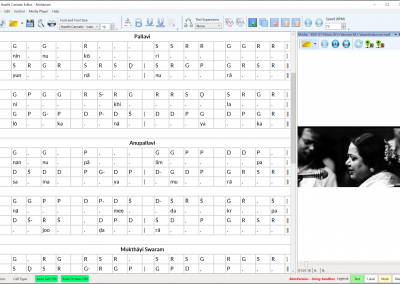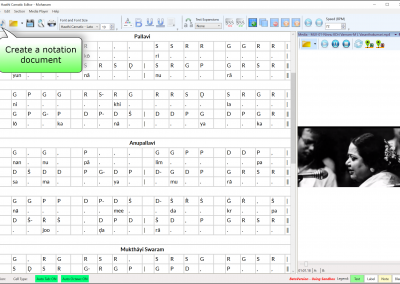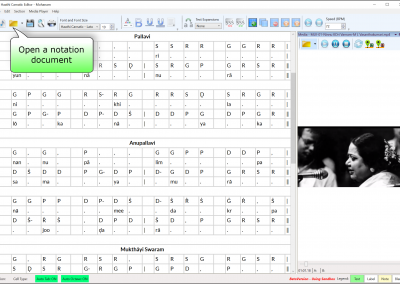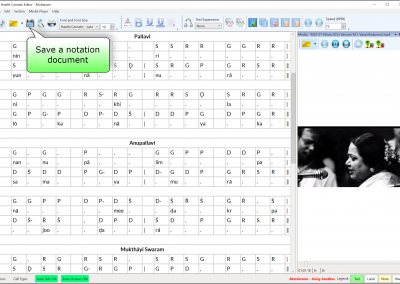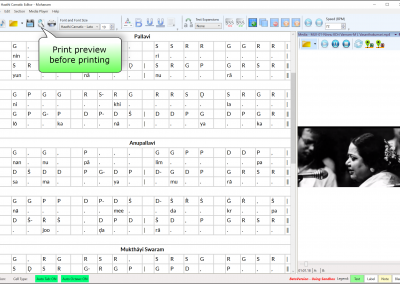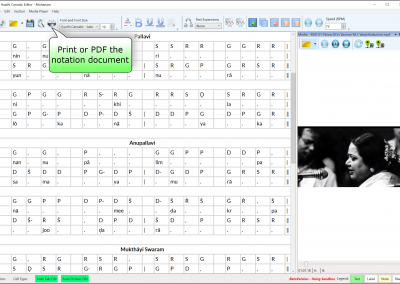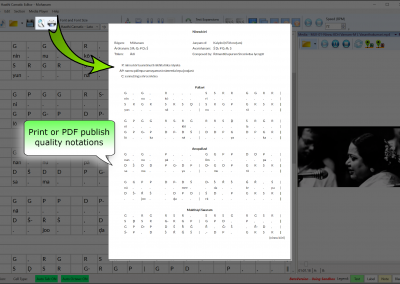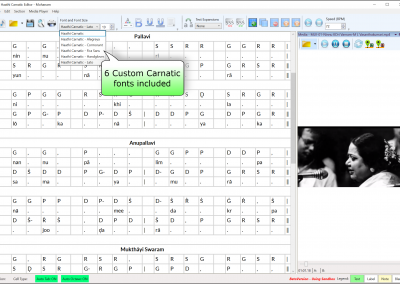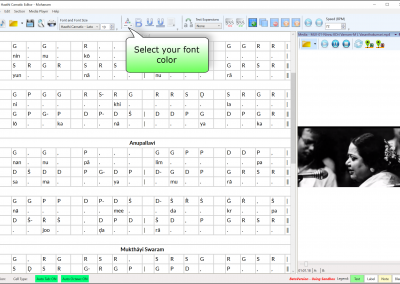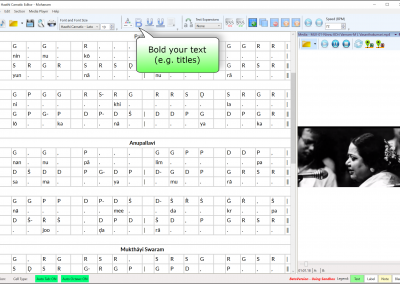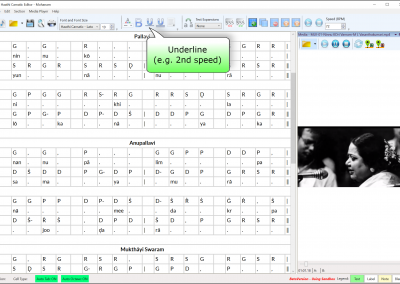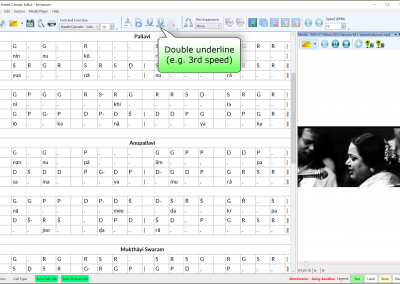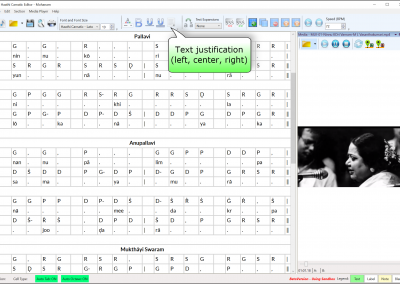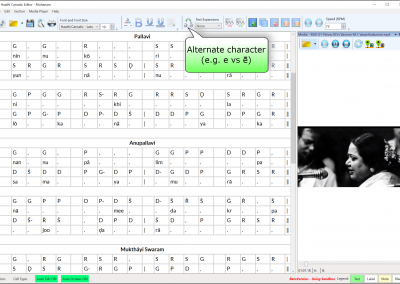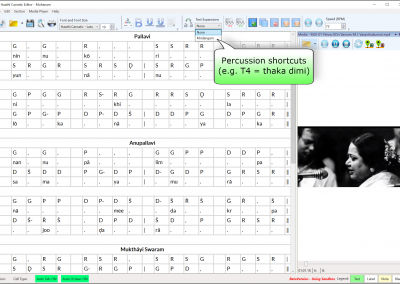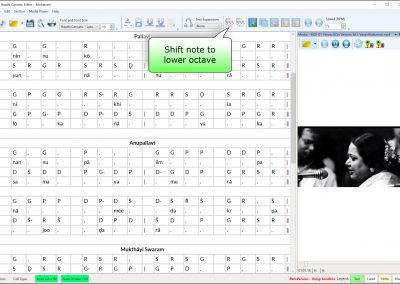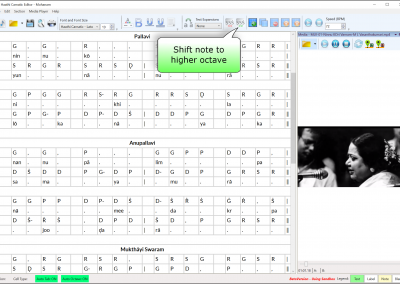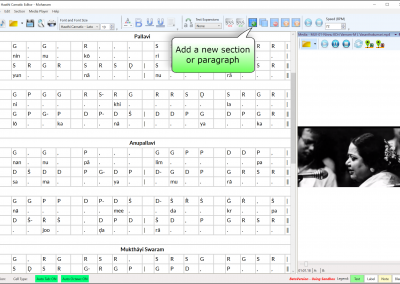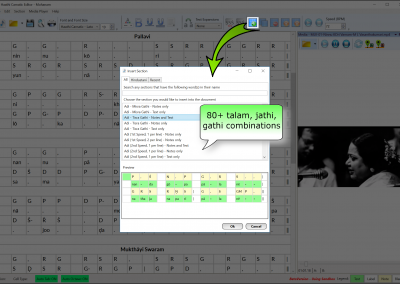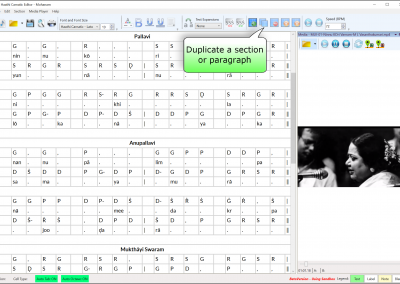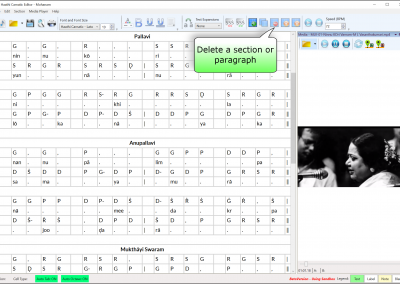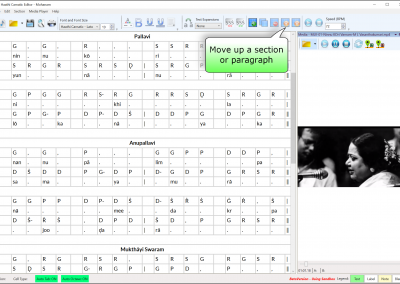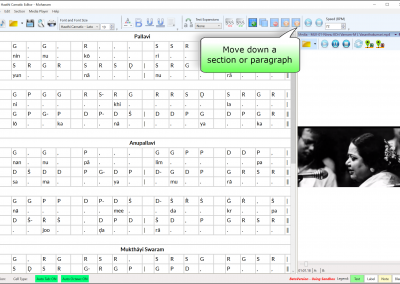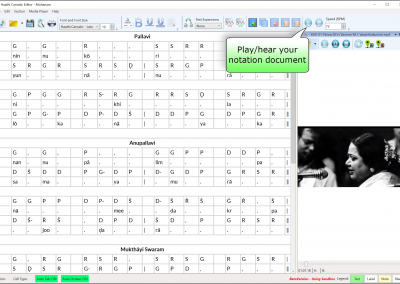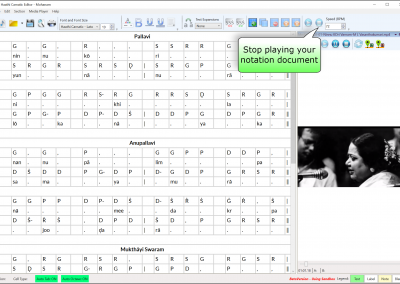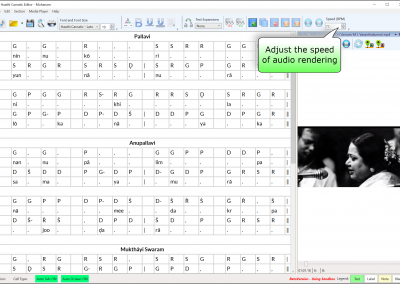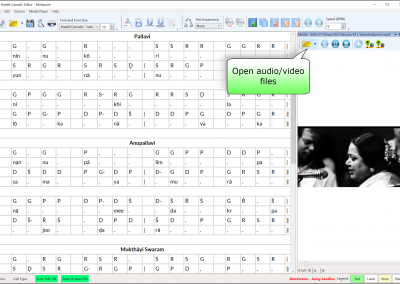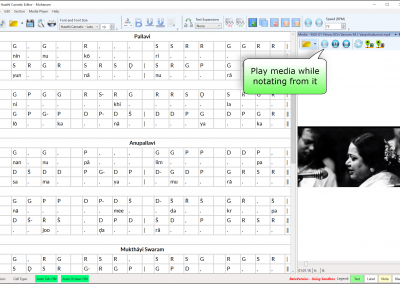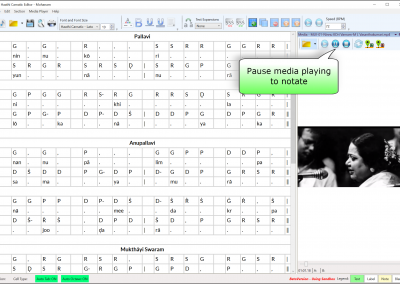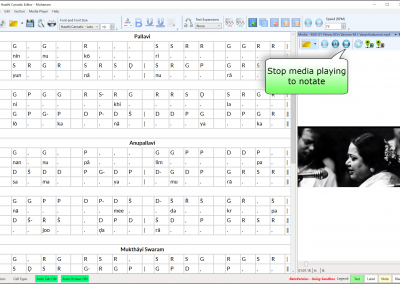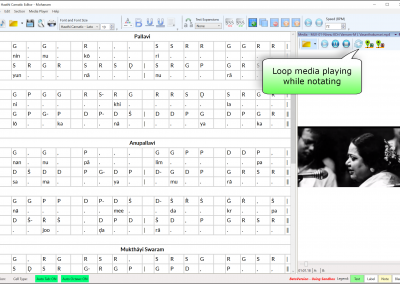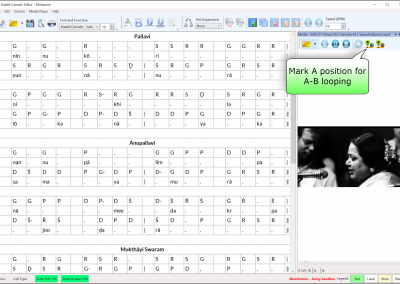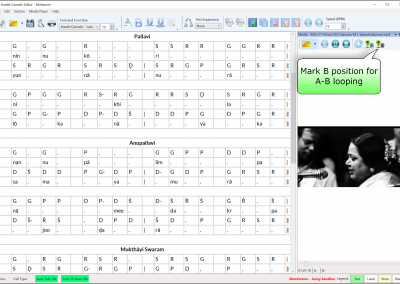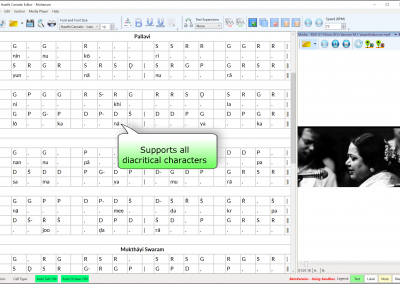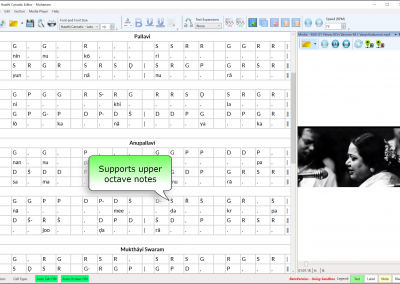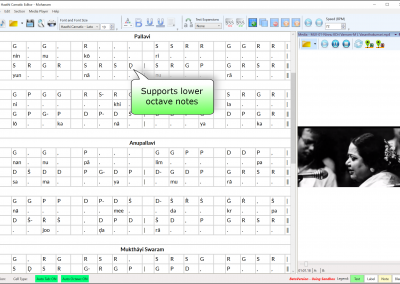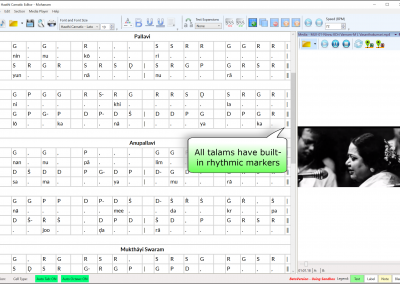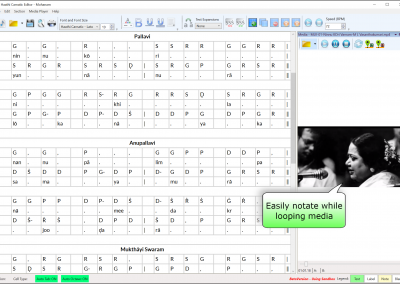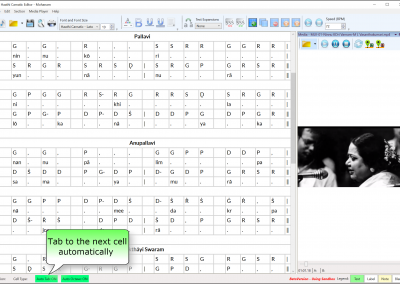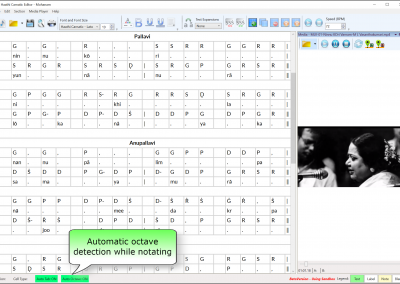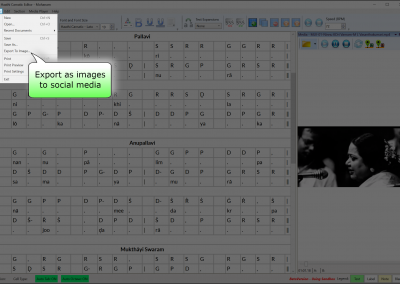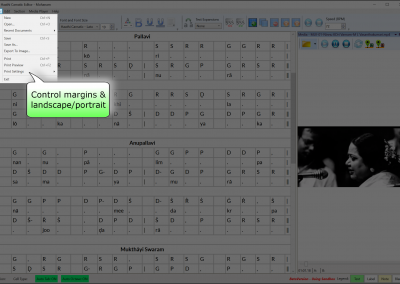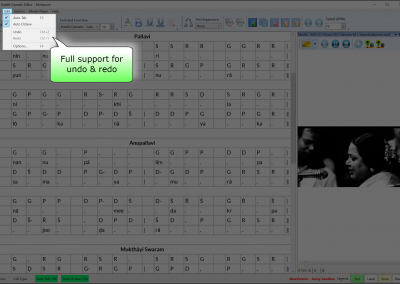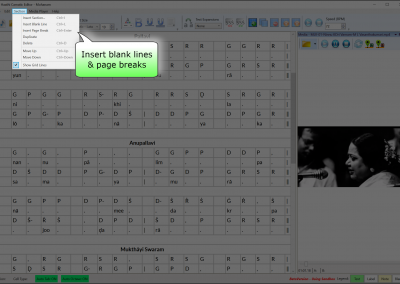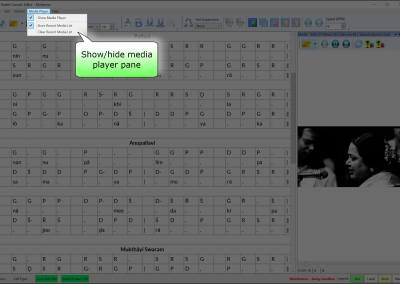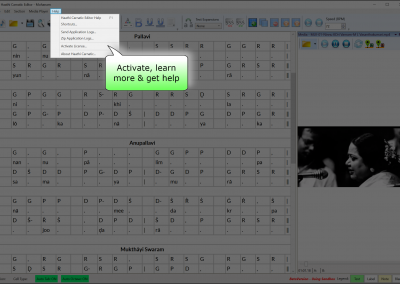About Carnatic Editor
Haathi Carnatic Editor is a revolutionary and modern notation editor that runs on Microsoft Windows© and is specifically designed for notating Carnatic music. It allows for the creation of publish quality aesthetically pleasing notation documents in print form or PDF form. It includes many innovative features such as custom Carnatic fonts, automatic tabbing, support for special diacritic characters, automatic octave detection, audio rendering, background media playing, and many more features. At the end of the day, it will allow you to create beautiful and precise notation documents 200-300% faster than using tools like Microsoft Word or Excel.
A Visual Tour of Haathi Carnatic Editor
Take a visual tour of Haathi Carnatic Editor by viewing this gallery of 40+ screenshots.
Buy / Download
Reader only
♦ View/print notations
♦ Free download!
♦ Free updates forever!
Subscription
♦ Subscription license
♦ Cancel anytime
♦ Free updates included
$4.99 / mo
Single License
♦ Perpetual license
♦ For 1 Windows PC
♦ Free updates forever!
$69.99
Dual License
♦ Perpetual license
♦ For 2 Windows PCs
♦ Free updates forever!
$99.99
Triple License
♦ Perpetual license
♦ 3 Windows PCs
♦ Free updates forever!
$129.99
Key Features
Custom Carnatic Fonts
Auto Octave
Auto Tab
2nd and 3rd speeds
80+ Carnatic Thalams
Easy Sangathi Creation
Notate from Audio or Video
Play Your Notation
Subscript notes/swaras
Publishing quality
Share on Social Media
Undo & Redo
Keyboard Shortcuts
Sangathi differentiation
Easily add X karvais
Insert/Remove karvais
Percussion Notations
Jathi Expansion Shortcuts
Paadaanthram preservation
Advance Notations
Key Benefits
Easy To Use
Designed For Everyone
Easy To Try
Characteristic Phrases
Kalpana Swarams
Neraval
Compose Songs
Compose Swara Patterns
Detailed Explanation of Features
Check out the What’s New page for a detailed explanation of every single feature of Haathi Carnatic Editor, along with lot of screenshots! We update this page with every major release of the software. Most recently released features are listed on top. Read from the bottom up if you wish to familiarize yourself with the features as they were released over the years!
Need Support? Have Questions? Ideas? Suggestions?
If you need help with any of our products, or if you have any questions, please contact us via the Contact page.
We encourage you to check out the Haathi Carnatic Editor F.A.Q as we may already have answered any questions you may have.
Do you have any other questions or comments about our products? Or ideas for new features? Or suggestions for modifying existing features? If so, please contact us! You can also use the contact form to report any bugs or to request any support or help on using the product(s).
Feedback on Haathi Carnatic Editor
Feedback on the Auto Octave feature
Why is it important to write notation?

